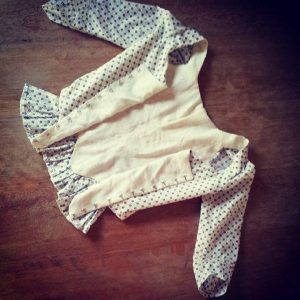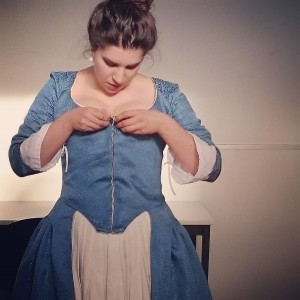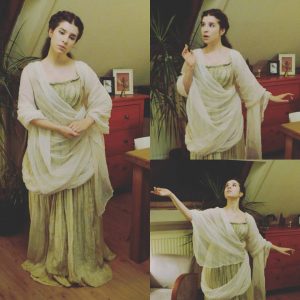

|
04-Feb / DIVA ON A SHOE STRING-Historical Acting / 0 COMMENTS
Right at the start of my research of Historical acting, I understood that my work will have to do with connecting the dots. Not just comparing between written sources written by actors, singers, composers, critics and theater goers of the time, looking at paintings, making speeches and singing- I figured I will have to literally walk through the gaps of knowledge that remain because we have no time machine, yet 🙂
So how does one connect these intriguing dots? What would be the best way to get from someone’s point A to another someone else’s point B? To do that we definitely have to lose some of our modern preconceptions and literally step into someone else’s shoes. Before coming to conclusions, you must understand the experiences, challenges, thought processes, etc. which are relevant to the piece of music or drama you want to approach. I believe, the ability to think yourself into another person’s shoes, will help develop compassion and to cultivate empathy, sensitivity and deeper understanding of the piece. All of this is well and good for academic and intellectual purposes, and is vital for practical endeavors. Walking in- if not the very same, then a similar style- shoes , or even better, walking a whole mile in all their garments, will have a direct effect on how you walk that mile. Clothes limit, change, and shape one’s movement. You can argue for ages if one gesture or another was not done, or if it was- in what way would one go about it, but wearing the clothes one wore at the time- or the closest style you can get your hands on, will give you a clear idea of what movement is or isn’t possible, what is graceful and what looks silly.
For my own personal research I decided to start a small collection, and own pieces that will give me 3 different style garments for 3 different types of characters I might need to play- A lady, a maid, and a mythological character. Here’s a list of the outer garments I currently own: A maid’s bodice (style circa 1770), a simple linen white under skirt (mid 18th century style), a top part of an English style dress (style circa 1770), and a Greek style dress (style circa 1810). The undergarments I currently own are: 1 pair of cotton knee high socks, 1 linen/ cotton chemise (style mid 18th century), 1 corset (style mid 18th century). Items still needed: A bum roll. I’ve been using a plane neck cushion for a few shows, and to tell you the truth, it does a great job having the right measurements- but it’s not mine. It’s pretty hilarious, I actually borrowed it from a friend. It’s a pretty easy item to get online, or I can even make one myself. I just haven’t got round to it yet. To be honest , once you go down the historical costume route, it become a rabbit hole pretty quickly. As usual, things are not as straight forward as they seem. You started off thinking you wanted to wear a certain style dress, but you will end up with a minimum of 5 different items you’ll have to wear under it for it to sit just right.
Here are some photos of my current historical garments from moments behind the scenes:

Chemise, Corset and Simple linen skirt made by Willoughby&Rose (mid 18th century style)

A cotton bodice for a maid character, made by yours truly (style circa 1770)

A top part of an English style dress, made by yours truly (style circa 1770- worn without a bum roll)

Ariadne of Naxos costume test, bought from Gerritsen Theaterkostuums, Amsterdam (style circa 1810)